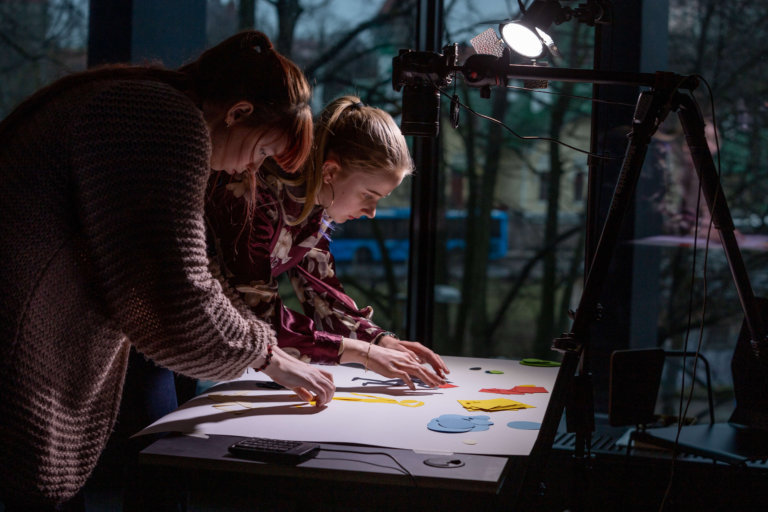
From boardrooms to some of the meteoric startups of today, arts graduates can be found thriving. Coca-Cola and GAP have hired artists to consult on their innovation and branding challenges. Walt Disney Company CEO Michael Eisner holds a degree in theatre. Steve Ells, founder of US$20 billion burrito chain Chipotle, studied art history at university. Look beyond the glam rocker look of Australian design school graduate David Shing and you’ll see why he’s dubbed the “creative prophet” who brought in blue-sky thinking among Silicon Valley tech executives.
For all the hype on STEM (an acronym for Science, Technology, Engineering and Mathematics) graduates, data shows those taking arts, humanities and social science degrees are just as employable. These graduates land jobs in eight of the 10 fastest-growing sectors of the economy more often than their STEM peers, according to a report by the British Academy last year. They are just as likely to earn money and be impervious to economic downturns as their STEM counterparts too.
Why? Flexible skills. “That’s increasingly important in an economy when you often don’t have a job for life,” says the British Academy’s Harriet Barnes. Here are four universities in Europe that teach these best:
ESTONIAN ACADEMY OF ARTS
Programmes that enrich individual practice. Lecturers that empower cross-disciplinary investigations. Unique, innovative and experimental experiences in one of Europe’s most dynamic, up-and-coming cities. Personalised learning. These features define the Estonian Academy of Arts (EKA).
EKA offers eight international master’s programmes and two PhD programmes taught in English: Animation MA, Contemporary Art MA, Design and Crafts MA, Design and Technology Futures MSc, Graphic Design MA, Interaction Design MA, Literature, Visual Culture and Film Studies MA, Urban Studies MSc, Art and Design PhD, as well as Architecture and Urban Design PhD.
With a low student-to-professor ratio (about 3:1), one-on-one approach to instruction and a close-knit vibe, expect classes to feel like family in this quaint and synergetic atmosphere. You’ll learn from lecturers and instructors who are professionals in their field. They are internationally recognised artists, architects, designers, historians, and scholars who provide unique insights and personal mentorship.
The setting? A new award-winning building. Prepare to be surrounded by innovation and inspiration as you work in its modern workshops, studios and other facilities. If you’re a creative soul in pursuit of artistic dreams, personal growth and a dynamic career, you’ll find the launchpad you’ll need at EKA. Learn more here.
Estonian Academy of Arts’ participation in this article is supported by the European Regional Development Fund.
GLASGOW SCHOOL OF ART

At the Glasgow School of Art, you’ll learn how to create a better world. Source: Glasgow School of Art Facebook
Since its founding in 1845 as one of the first Government Schools of Design, the Glasgow School of Art’s purpose remains the same: to contribute to a better world through creative education and research. If this is your aim, you’ll find the programme and experience you’ll need to realise it at one of Europe’s leading higher education institutions for the education and research in the visual creative disciplines.
Here, you’ll follow a studio-based approach. You’ll fuse disciplines, explore problems from novel perspectives and pursue solutions doggedly. The setting at GSA is ideal for this, allowing interdisciplinarity, peer learning, critical enquiry, experimentation and prototyping.
In a Master of Design in Fashion and Textiles class, you’ll take two broad types of fashion design: “Textile, or surface, led” or “Silhouette, or shape, led.” The former deals with the two dimensional, i.e. the surface (print, embroidery, decoration) or structure (weave) of the fabric in a garment. The latter focuses on the 3D, i.e. the shape, cut, outline and construction of a garment.
In a MDes in Design Innovation and Collaborative Creativity, you’ll learn about methods to help organisations adopt a human-centred approach. This is done through taking on projects that confront key social, political and economic issues, often working with partners from within industry or the public sector.
Other programmes offered here include Masters in Design Innovation & Citizenship; Masters in Design in (Graphics/Illustration/Photography); M.Litt in Fine Art Practice; MSc Heritage Visualisation; and more.
UNIVERSITY OF THE ARTS LONDON
If you want to kickstart a creative future in the heart of London, head to the University of the Arts London. Don’t take this as mere claim — UAL’s accolades include being ranked second in the world for Art and Design in the 2021 QS World University Rankings as well as being the alma mater of half the Turner Prize nominees and both winners in 2016 and 2017, two thirds of the winners of British Designer of the Year; over half of the fashion designers that showed at London Fashion Week 2018 and 14% (20) of the current Royal Designers for Industry.
UAL graduates have won some of the industry’s most prestigious art and design awards too, from the BP Portrait Award and Jerwood Prize to the Taylor Wessing Photographic Portrait Prize and Queen Elizabeth II Award for British Design.
This prolific streak is the work of UAL’s greatest asset: people. Specifically, the teachers who inspire and bring industry insights from their practice as professional artists, designers, technicians, critics and theorists.
UAL offers an extensive range of courses in art, design, fashion, communication and performing arts in its six equally renowned colleges: Camberwell College of Arts, Central Saint Martins, Chelsea College of Arts, London College of Communication, London College of Fashion and Wimbledon College of Art. Regardless of what you choose and where you go, the awards mentioned above point to one pretty much guaranteed path to success.
UNIVERSITY OF THE ARTS HELSINKI
Nearly 2,000 students, 621 performances in a year, ninth-best in the world in performing arts (QS ranking 2021), 20% of doctoral students come from outside Finland. The University of the Arts Helsinki (Uniarts Helsinki) may be young but make no mistake, as these figures show, it is just as dynamic as its older counterparts.
Little wonder then that despite COVID-19, it saw a record number of global applicants for the Spring 2021 intake. It received 4,679 applications, an increase of 10% compared to 2020. The share of international applicants (i.e. non-Finnish citizens) of all applicants also broke records, at 22%.
“Receiving this much interest from international applicants shows that Uniarts Helsinki is in the same league as the world’s best educational institutions,” says Rector of Uniarts Helsinki Kaarlo Hildén. “Uniarts Helsinki’s reputation is positively influenced by excellent ranking results, for example, including the ninth place of Uniarts Helsinki’s Sibelius Academy in the global QS university ranking of performing arts schools in 2021.”
Established in 2013, Uniarts Helsinki consists of the Academy of Fine Arts, Sibelius Academy and Theatre Academy. It offers programmes in music, fine arts, theatre and dance.
Ask students about their favourite part of their programmes and many would point to their hands-on nature. “In our programme, there are many opportunities to take part in various projects (even more if you know some Finnish). My favourite has been helping to produce MuTeFest, a festival highlighting the artistic work of students from the Centre for Music and Technology at the Sibelius Academy,” shares Elizaveta Bomash who is currently studying Arts Management at the Sibelius Academy.
Natalie Hamada, 27, who graduated with a bachelor’s and a master’s degree in fine arts, agrees. “There are always many interesting art events going on – exhibitions, open calls, group sales exhibitions and many more,” she shares. “For me, the best things are the studio spaces that are offered for all the students in the university building and the workshops that are open to us 24/7.”
*Some of the institutions featured in this article are commercial partners of Study International










